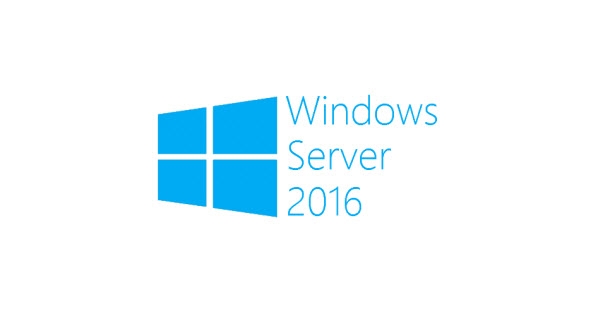Nov 16, 2016

As it is known in Microsoft SPLA, SharePoint Server Standard and Enterprise licenses are provided under the Subscriber Access License, which means that each end customer’s internal users who can directly or indirectly access the SharePoint Server would need a license. Service Provider will use the software in this case to provide internal users access to content, information, and applications. Therefore, use of SharePoint Server software to provide content, information, and applications that are limited to internal users must be licensed under SharePoint Server SALs.
SharePoint Hosting – Licensing Based on Processors Used
In contrast and in order to provide SharePoint Server as a Website or Hosted and therefore, allowing an unlimited number of external users to access it, in this case, the licensing scheme would shift from SAL to Processor License. Customer may use the software to provide External Users access to content, information, and applications. Customer may also use the software to provide internal users access to content, information, and applications so long as that same content and information and those same applications are also accessible by External Users.
To run Instances of the server software in the Physical OSE on a Server, you need a license for each physical processor that the Physical OSE uses.
To run Instances of the server software in the Physical OSE on a Server, you need a license for each physical processor that the Physical OSE uses.
Scenario 1
SharePoint Hosting roles are deployed on 1 physical server with 2 physical processors. Therefore, in this case, SharePoint Hosting would require a total of 2 licenses equal to the number of physical processors.
To run Instances of the server software in Virtual OSEs on a Server, you need a license for each virtual processor that each of those Virtual OSEs uses. If a Virtual OSE uses a fraction of a virtual processor, the fraction counts as a full virtual processor.
Scenario 2
SharePoint Hosting roles are deployed on 1 Virtual Machine with 8 Virtual Cores. This Virtual Machine is created on a Physical Server with 2 physical processors and 4 Cores per Processor. In this case partner would need 8 (Virtual Cores) / 4 (Cores per Processor) = 2 licenses.
Sep 28, 2016

Windows Server 2016 & System Center 2016 will be available in SPLA in October.
Licensing Summary:
- Per core license model replaces processor license model on October SPUR.
- Each physical processor needs a minimum of 8 core licenses.
- Both Windows Server Standard & Datacenter Editions provide support for unlimited Windows Server containers.
- Windows Server Standard Edition requires all physical cores to be licensed in order to run 1 Windows Hyper-V container (or Virtual Machine).
- Windows Server Datacenter Edition requires all physical cores to be licensed in order to run unlimited Windows Hyper-V containers (or Virtual Machines).
New Licensing SKU’s:
| Part Number |
Item Name |
| 9EM-00562 |
WinSvrSTDCore ALNG LicSAPk MVL 2Lic Core |
| 9EA-00039 |
WinSvrDCCore ALNG LicSAPk MVL 2Lic Core |
| 9EN-00494 |
SysCtrStdCore ALNG LicSAPk MVL 2Lic Core |
| 9EP-00037 |
SysCtrDatactrCore ALNG LicSAPk MVL 2Lic |
| 9GA-00006 |
CISSteStdCore ALNG LicSAPk MVL 2Lic Core |
| 9GS-00495 |
CISSteDCCore ALNG LicSAPk MVL 2Lic CoreL |
Licensing Scenarios:
- Scenario 1: A physical server with 2 Physical Processors and 4 Cores would require in the new licensing method:
In case of Windows Server Standard:
| Part Number |
Item Name |
Quantity |
| 9EM-00562 |
WinSvrSTDCore ALNG LicSAPk MVL 2Lic Core |
8 |
In case of Windows Server Datacenter:
| Part Number |
Item Name |
Quantity |
| 9EA-00039 |
WinSvrDCCore ALNG LicSAPk MVL 2Lic Core |
8 |
- Scenario 2: A physical server with 2 Physical Processors, 4 Cores and 2 Virtual Machines would require in the new licensing method:
In case of Windows Server Standard:
| Part Number |
Item Name |
Quantity |
| 9EM-00562 |
WinSvrSTDCore ALNG LicSAPk MVL 2Lic Core |
16 |
In case of Windows Server Datacenter:
| Part Number |
Item Name |
Quantity |
| 9EA-00039 |
WinSvrDCCore ALNG LicSAPk MVL 2Lic Core |
8 |
- Scenario 3: A physical server with 2 Physical Processors and 16 Cores would require in the new licensing method:
In case of Windows Server Standard:
| Part Number |
Item Name |
Quantity |
| 9EM-00562 |
WinSvrSTDCore ALNG LicSAPk MVL 2Lic Core |
16 |
In case of Windows Server Datacenter:
| Part Number |
Item Name |
Quantity |
| 9EA-00039 |
WinSvrDCCore ALNG LicSAPk MVL 2Lic Core |
16 |
*The total licenses needed is divided by 2 since each reporting SKU covers 2 core licenses
Partners whose Microsoft SPLA Agreement is not yet expired, can still report the Windows Server Per Processor License until the expiry date of their Agreement.
Jul 19, 2016

Microsoft released a new licensing update for products that are licensed under the Per Core licensing method such as Microsoft SQL and Microsoft BizTalk. Microsoft discontinued the Core Factor when calculating the licenses required for these products. In the new Services Provider Use Rights, you calculate the number of cores on the physical server or the number of virtual cores on the VM. You just need to report a minimum of 4 cores per VM/physical core. You can find below the explanation from the SPUR Document.
For Products under the Per Core License Model, Customer must choose either licensing by Physical Core on a Server or licensing by Individual Virtual OSE. The terms for each are set forth below.
Server Licenses (per core) – Licensing by Physical Core on a Server
1. Customer may use the server software on a Licensed Server, provided it acquires sufficient Licenses as described below.
2. The number of Licenses required equals the number of Physical Cores on the Licensed Server subject to a minimum of four Licenses per Physical Processor.
3. For enterprise editions, Customer may use any number of Running Instances of the server software on the Licensed Server in the Physical OSE and/or any number of Virtual OSEs.
4. For other editions Customer may use any number of Running Instances of the server software only in the Physical OSE on the Licensed Server.
Server Licenses (per core) – Licensing by Individual Virtual OSE
1. Customer may use any number of Running Instances of the server software in any Virtual OSE on the Licensed Server, provided it acquires sufficient Licenses as described below.
2. The number of Licenses required equals the number of Virtual Cores in the Virtual OSE, subject to a minimum of four License per Virtual OSE.
3. If any Virtual Core is at any time mapped to more than one Hardware Thread, Customer needs a License for each Hardware Thread to which it is mapped.
Jun 22, 2016
 Nowadays companies want to have an ERP solution but want to keep their data on their servers. However, they don’t have the expertise for managing these servers and they don’t want to pay a big investment upfront.
Nowadays companies want to have an ERP solution but want to keep their data on their servers. However, they don’t have the expertise for managing these servers and they don’t want to pay a big investment upfront.
After signing the Microsoft SPLA, partner can provide a full Managed Services solution to the end customer while adding his cost to the type of license and differentiate the price based on license type and edition. Customer will have therefore a simple pay-as-you go monthly payment with no upfront cost.
What are the benefits for partner and end customer?
Benefits for Customer:
- Customer doesn’t have big upfront costs
- Customer will have a pay as you go payment method
- Customer always has access to the most current product versions
- Partner can deliver the solution customized based on customer’s requirements
Benefits for Partner:
- Partner now has an option B to capture all lost opportunities for customers who can’t afford big investments
- Partner can add to his offering his support and margin in order to increase his revenue
- No upfront commitment for partner
In addition to that, BPS Team is available round the clock to help assist you in:
- Advising in product selection, licensing, go to market, hosting projects bidding & platforms (Dynamics as a Service)
- Pre-sales advising: Assisting with all licensing questions and queries (by a group of licensing experts)
- Pricing for your end-customer projects based on a design sent per project
- Start now by joining the partner program
Sep 16, 2015
The SKU’s of Microsoft Forefront Identity Manager have changed, but the price remains the same. The FIM per processor license is still available. Microsoft Identity Manager 2016 Functionality is now included in Windows Server 2012 R2. You will need both Windows Server 2012 R2 per processor licenses as well as the Microsoft Identity Manager 2016 SAL to use the Identity Manager functionality. Microsoft Identity Manager 2016 Functionality has been included with Windows Server 2012 R2 Datacenter, Windows Server 2012 R2 Standard, and Cloud Platform Guest.












